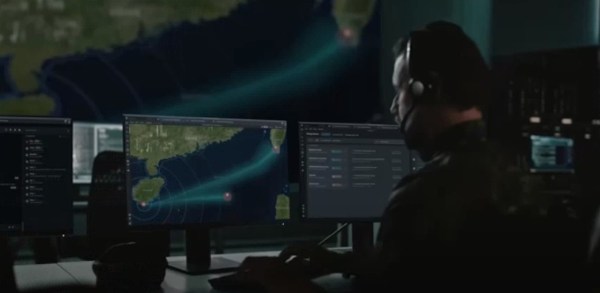Navy SWO boss frustrated by shortage of directed energy weapons

Amid kamikaze drone attacks in the Red Sea that are putting military and commercial vessels at risk, the commander of U.S. Naval Surface Forces said he wants to accelerate the development and fielding of high-powered lasers and microwaves that could counter these types of threats.
U.S. ships and their crews have been using missiles and other traditional types of air-defense weapons in recent months to take down the Houthi’s unmanned aerial systems and platforms.
“What we’re facing in the Red Sea is more than just drones. We’re looking at land-attack cruise missiles, we’re looking at anti-ship ballistic missiles that are getting shot in the Red Sea by the Houthis. And our ships are dealing with all of those,” Vice Adm. Brendan McLane told reporters during a teleconference ahead of the Surface Navy Association’s annual symposium that kicks off Tuesday.
“One of the things that I think we really need to get after quicker is we need to accelerate the development of directed energy weapons, whether it’s a laser, whether it’s a microwave,” said McLane, the so-called SWO boss, when asked how the sea service is thinking about ways to counter drone swarms.
Examples of recent or ongoing research, development, test and evaluation efforts include the Solid State Laser Technology Maturation (SSL-TM); Optical Dazzling Interdictor, Navy (ODIN); Surface Navy Laser Weapon System Increment 1, also known as HELIOS; High Energy Laser Counter-ASCM Program (HELCAP); and the Layered Laser Defense (LLD) system, according to a recent Congressional Research Service report.
The Navy has tested various directed energy systems and prototypes, but they’ve only been installed on ships on a limited basis.
McLane noted that about a decade ago, he was commander of Destroyer Squadron 50 when the USS Ponce was equipped with a laser weapon system prototype for testing.
Ten years later, it’s “frustrating” that the Navy hasn’t fielded larger numbers of directed energy systems, he told reporters.
“I really want to put a lot of effort into accelerating that, because that that gives you so much [capability] when it comes to magazine capacity and speed and distance” for target engagement, he said.
Directed energy weapons are also touted as a more cost-effective way of shooting down enemy drones, compared with some of the air-defense missiles that are in the U.S. Navy’s arsenal.
A Government Accountability Office report released last year suggested that Navy leaders could do a better job of supporting the transition of successful DE prototypes into acquisition programs.
Meanwhile, the sea service is trying to beef up its munitions inventory.
“From a resource sponsor perspective, over the past two budget cycles, we’ve acknowledged that we need to increase inventory of all munitions. And we’re making those investments and we’re working very closely with industry to establish maximum sustaining rate, vice minimum sustaining rate, to fill our magazines, to fill our vertical launch cells. So that’s goodness,” Rear Adm. Fred Pyle, director of surface warfare, OPNAV N96, told reporters. “But we are always looking for cost-effective ways to neutralize a threat.”
He praised the sailors who are dealing with the Houthi attacks as part of Operation Prosperity Guardian.
“Crews are executing as trained, systems are performing as advertised. And when I think about this, I think about the cost of what this is preventing — rounds going into Israel, rounds going into blue force [assets and personnel], rounds going into the maritime shipping industry and what that generates from a maritime standpoint of major shipping companies having to divert around the around the tip of Africa … Right now, I would say we’re stable on our inventory. But it’s something we’re very focused on and we continue to work on,” he added.
Navy officials are trying to learn lessons from the Red Sea crisis in real time and make necessary changes.
“When it comes to the specifics of what are we doing, when it comes to tactics and training, I’m not going to get into the classified stuff. But what I can tell you is we’re watching it very closely. We have our warfare tactics instructors involved in analyzing the data that we’re getting from the tapes on [USS] Carney and the other ships. And we’re looking very closely at the profiles and what we have to do when it comes to radar tuning, and what we have to do when it comes to setting up our weapons systems on the ship to make sure that we have maximum defensive capability at all times,” McLane said.
Rear Adm. Joseph Cahill, commander of Naval Surface Force Atlantic, said the Naval Surface and Mine Warfighting Development Center and its warfare tactics instructors can update tactics, techniques and procedures based on the data that’s being gathered during the operation.
“We’re doing it at speed. And I think that’s another incredible and important investment because when we stood up the Surface and Mine Warfighting Development Center in 2014, we didn’t have that ability in the surface community to reach back to our own Top Gun [type of organization] to have those experts. And so that is happening today, and … those warfare tactics instructors are having impacts on combat performance at sea,” he told reporters.






